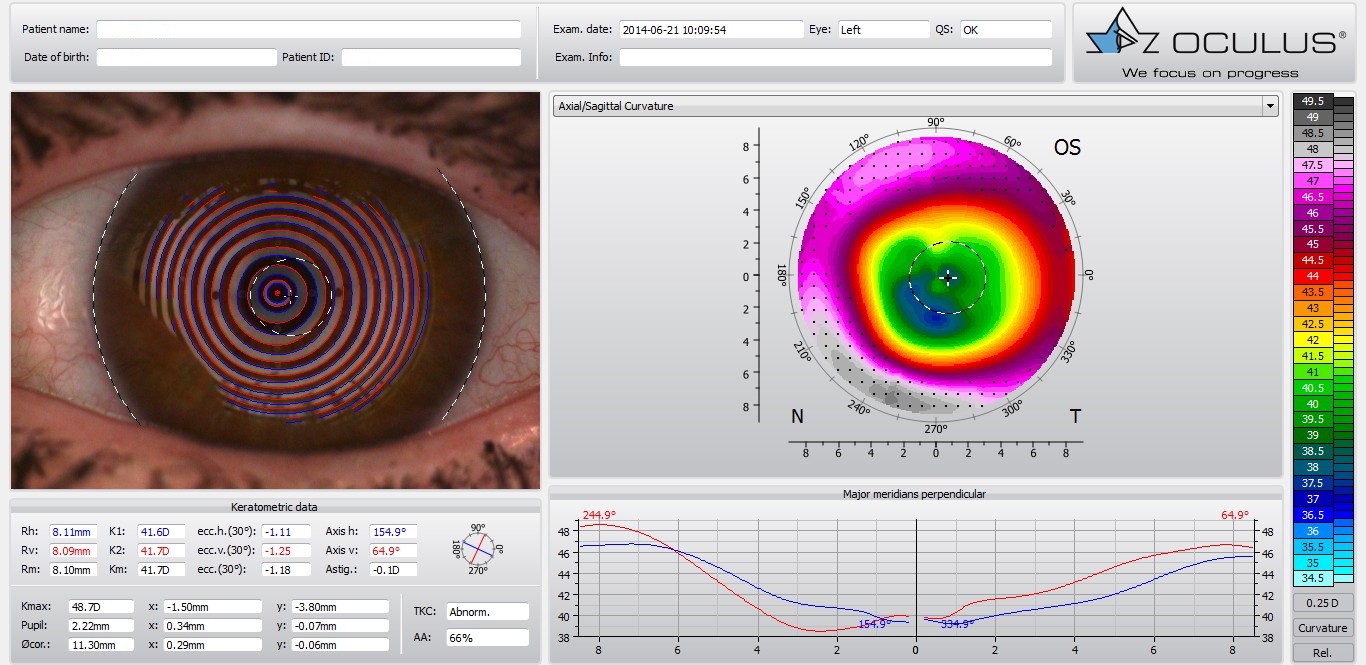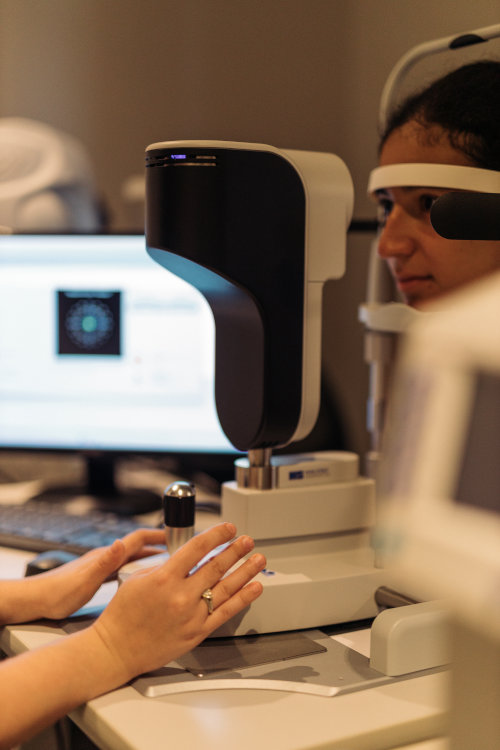OCT or Tomography
The OCT provides a scan of the retina showing the different retinal layers and is useful in screening for many diseases and conditions such as macular degeneration (DMLA), glaucoma, diabetic retinopathy, diabetic macular edema and many others. The OCT is non invasive, safe and only takes a few seconds. The OCT provides a point of reference for comparison and tracking of the progression of the pathologies and can be consulted by other specialists or colleagues if needed.
The Humphrey
Automated perimeter and the FDT can detect early visual field defects whether they are due to glaucoma, retinal diseases or neurological impairments (brain tumors, stroke…)
The pachymeter
Measures the thickness of the cornea (the transparent membrane on the surface of the eyeball). It allows greater precision in the measurement of intraocular pressure. This is an important indicator in the early detection of glaucoma and of corneal edema. The thickness of the cornea is important in evaluating if a patient will be a good candidate for refractive laser surgery.
The automatic edger
Cuts the lenses for your glasses and can adapt the size and shape of the lenses. It can cut all types of clear and tinted lenses, for metal, plastic and nylon thread frames.
The biomicroscope (slit lamp)
It is one of the instruments used by the optometrist during the basic eye exam. It is used to evaluate the anterior segment of the eyes (eyelids, cornea, crystalline lens, conjunctiva…) It is also used to evaluate the adjustment of contact lenses (in relation to the cornea, mobility and centering). Thanks to the addition of a Volk lens, this same instrument can be used to evaluate the health of the posterior segment of the eye (retina, optic nerve, macula…) The Goldmann tonometer is an annex connected to the biomicroscope that provides the evaluation of intraocular pressure, in order to detect the presence of glaucoma or ocular hypertension.
Different tonometers (Goldmann and non-contact tonometers)
They are used to evaluate intraocular pressure, in order to detect the presence of glaucoma or ocular hypertension.
The auto-refractometer
It is used during the pre-tests. It provides an estimate of the power of the eye. It also gives the optometrist the curvature of the eye.
The Oculus K5 corneal Keratograph-Topograph
It is used to evaluate the curvature of the cornea. It allows the detection and monitoring of the progression of certain anomalies such as keratoconus and pellucid marginal degeneration, as well as post-lasik treatments, etc. This instrument is paramount in orthokeratology treatment, and assists in establishing the parameters of rigid contact lenses. The Oculus is also used in the diagnosis and monitoring of dry eye syndrome by measuring the quantity and quality of tears, and by verifying the health of the Meibomian glands, thanks to an infrared image.

The biometer
The Lenstar biometer is Optika Eye Care Center’s latest acquisition. It is an ultra-precise instrument that measures the length of the eye. This measurement is useful in following the growth of an eye in children, evaluating the success of a given myopia control treatment, and evaluating the risks of possible ocular pathologies later in life. The Lenstar biometer also provides an approximative growth curve of a child’s eye. This measurement is taken simply by focusing on a dot of light, without direct contact to the eye. To learn more, do not hesitate to discuss it with your optometrist at Optika Eye Care Center.


